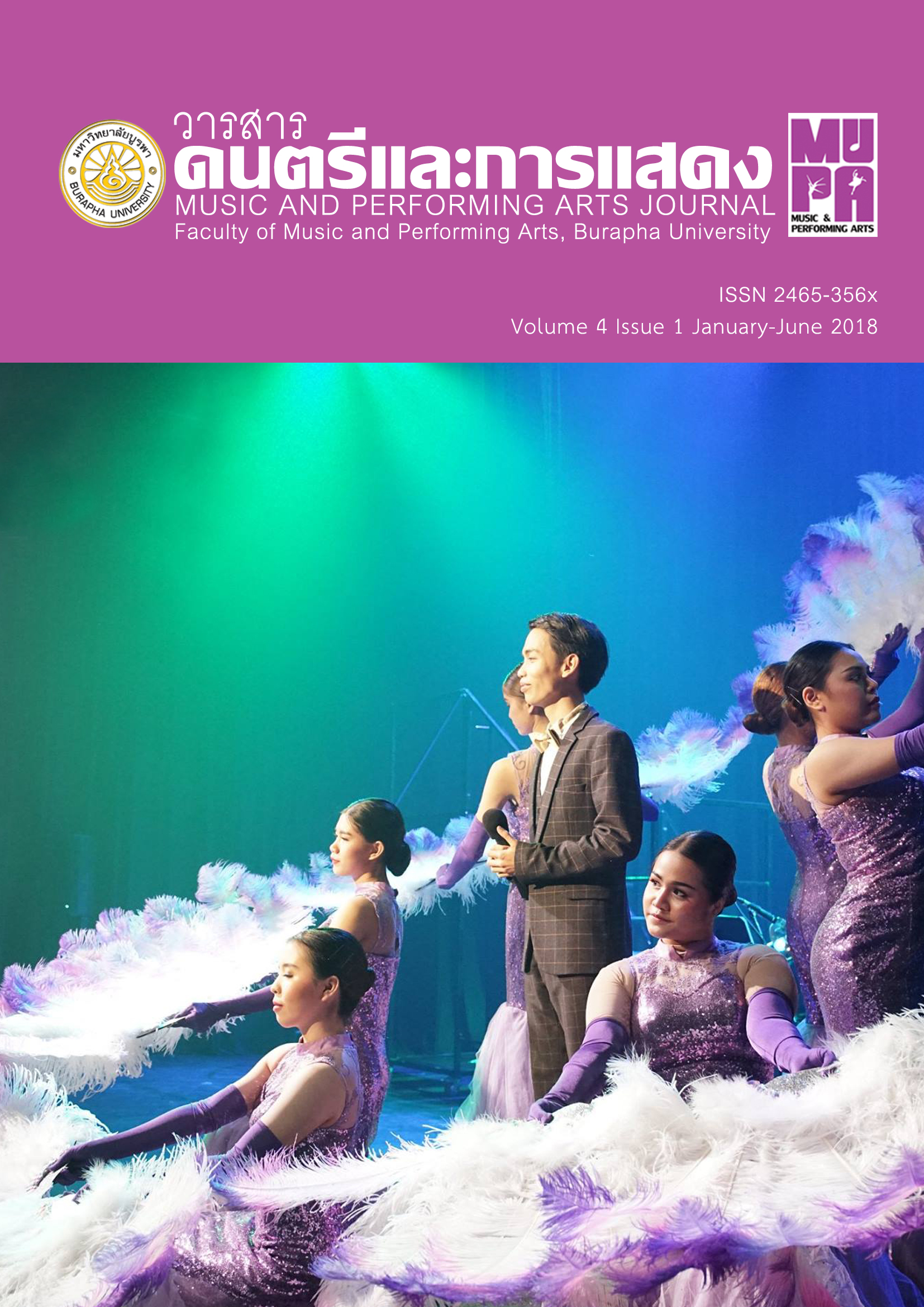Current Situation of Chinese Music in Chonburi Province: Case Study of Buddha Samakom SawangHet Dhamasatan Association.
คำสำคัญ:
Chonburi Province, Chinese music, Chinese associationบทคัดย่อ
The research on Chinese music in Chonburi province: case study of BuddhaSamakom SawangHet Dhamasatan association aims to study the music instrument classification of Chinese Instrument, music, roles and functions of Chinese music in the Buddha Samakom SawangHet Dhamasatan Association.
The research found out that Chinese music instrument were bought from China. There are several kinds of music instruments uses in the ensemble. The wind instruments called Huen-deg (or Di zi) and Tong-xiao (or Dong xiao); The string instrument called Ri-hu (Er-hu), Pan-hin (Ye hu) and Dua pa (Di hu). The dulcimer called Ian-Kim (Yang qin). The lyre called Bi-be (Pipa). The Ian-kim (Yangqin) is the main Instrument of the ensemble which is used to tune all instrument of the ensemble.
The results of musical analysis found out that the movement of the melody was divided to 13 sections. The direction of the melodies is in three courses; upward direction, direction down and fixed direction. The melody has the 2nd interval, 3rd interval, 4th interval and 5th interval. The most frequency of the interval were found by order are the 2nd interval, 4th interval, 5th interval, 6th interval, 7th interval and the octave.
The role and function of Chinese music in the Chonburi Buddhist Association were divided into 4 parts. Firstly, the role of Chinese music to the local society and the community uses for promoting Mahayana Buddhism for the villagers became participation of the ritual, preachment, edification.
Secondly, the role of Chinese music for the ritual such as Sheng-Ming ceremony; vegetarian festival, Chinese new year celebration, as well as the weddings. Thirdly, the role of Chinese music for presenting Chinese music is very limited. Since the occupation of the Chinese opera left. Remain in the Engor Dance, the role of Chinese music is a performance to complement the occupation.



